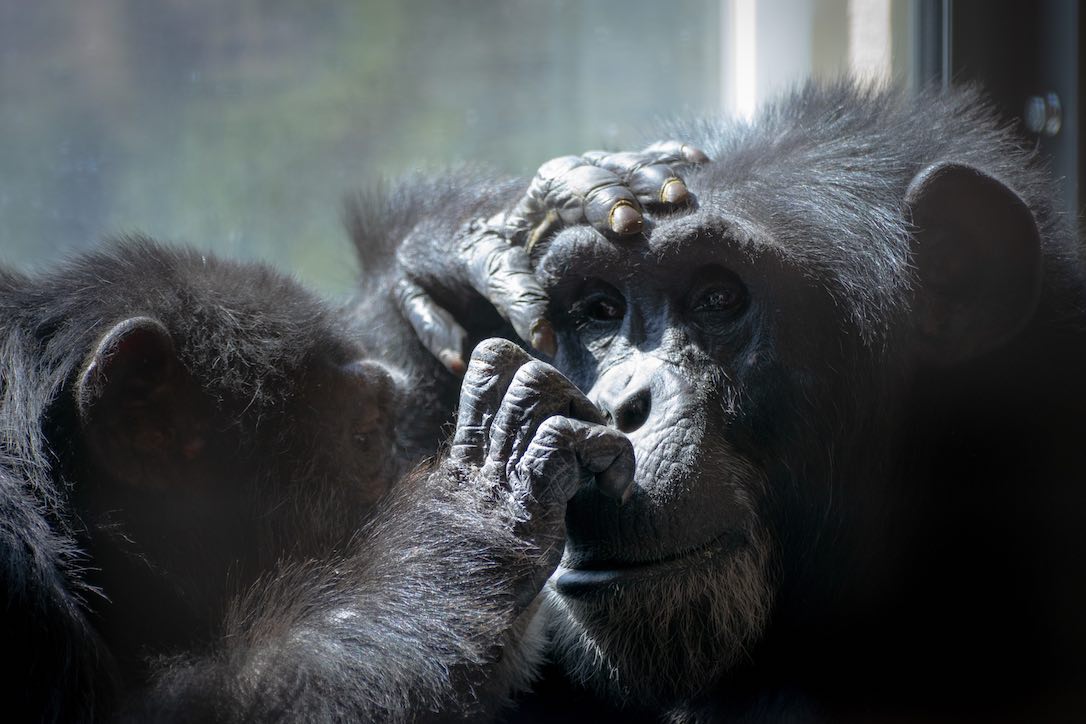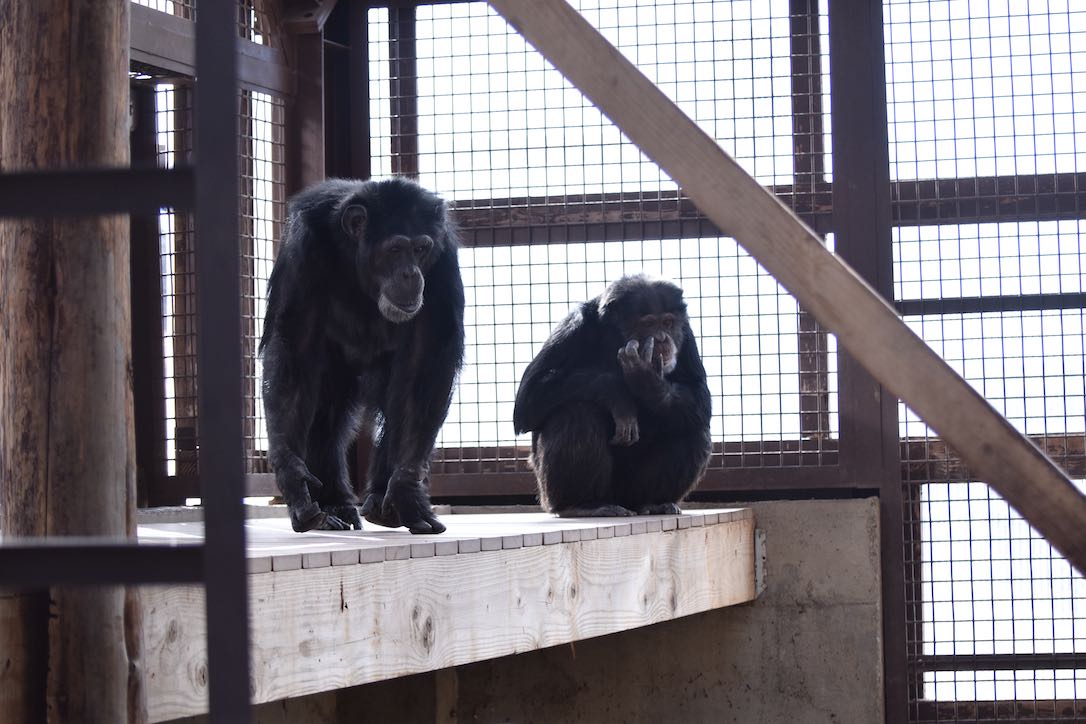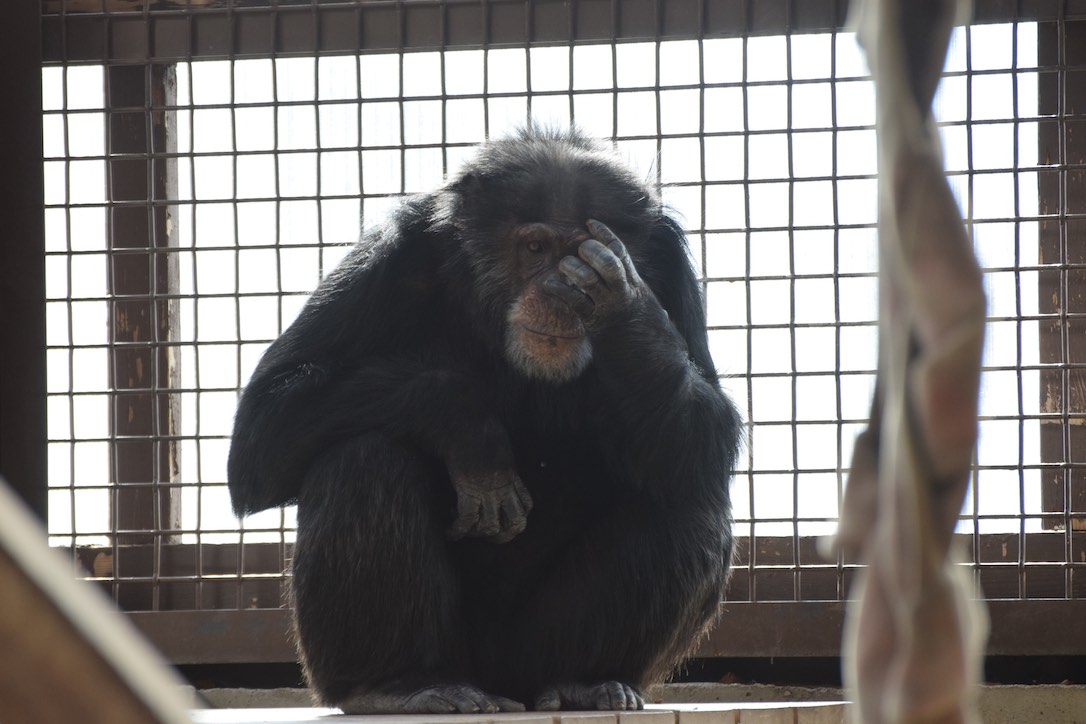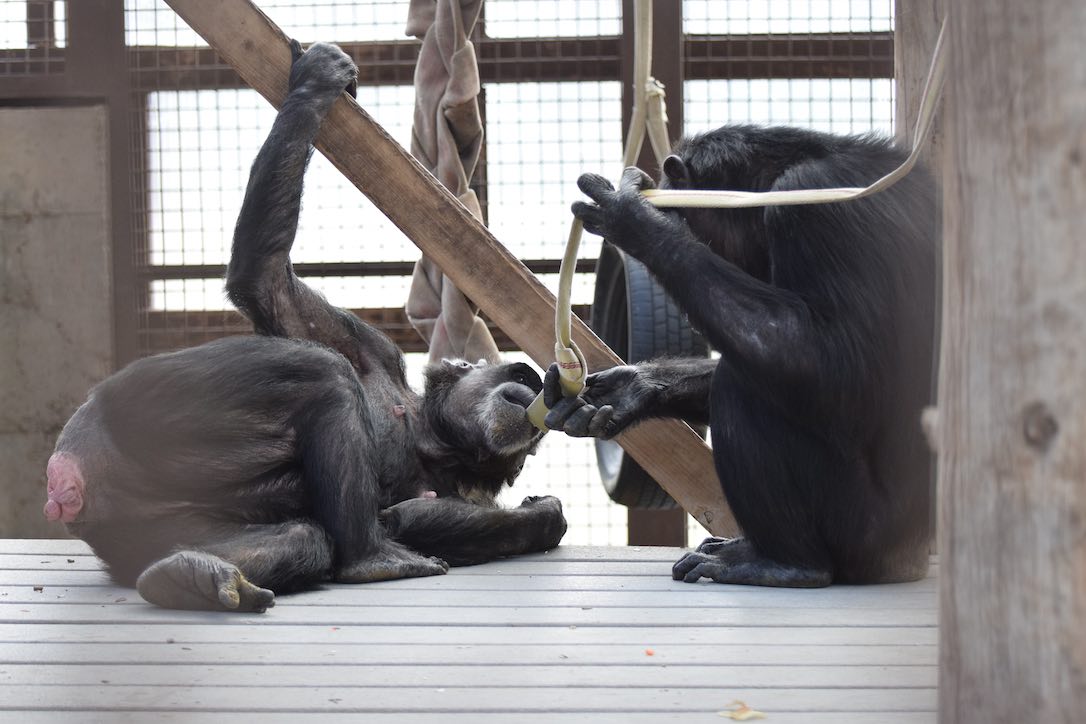Some dominant male chimpanzees maintain power through brute force and intimidation. But not all.
Traits such as kindness, fairness, and tolerance are often overlooked in discussions about chimpanzee dominance hierarchies, yet they can also be effective as a means to achieve status. Cy is a good example of this. It’s true, he has been known to steal a chow bag or two from his group mates, but he’s just as likely to use his alpha position to defend the underdog and keep the peace as he is to enrich himself.
This video shows just a small example of the myriad ways in which Cy’s leadership is called upon to maintain stability in his group.











